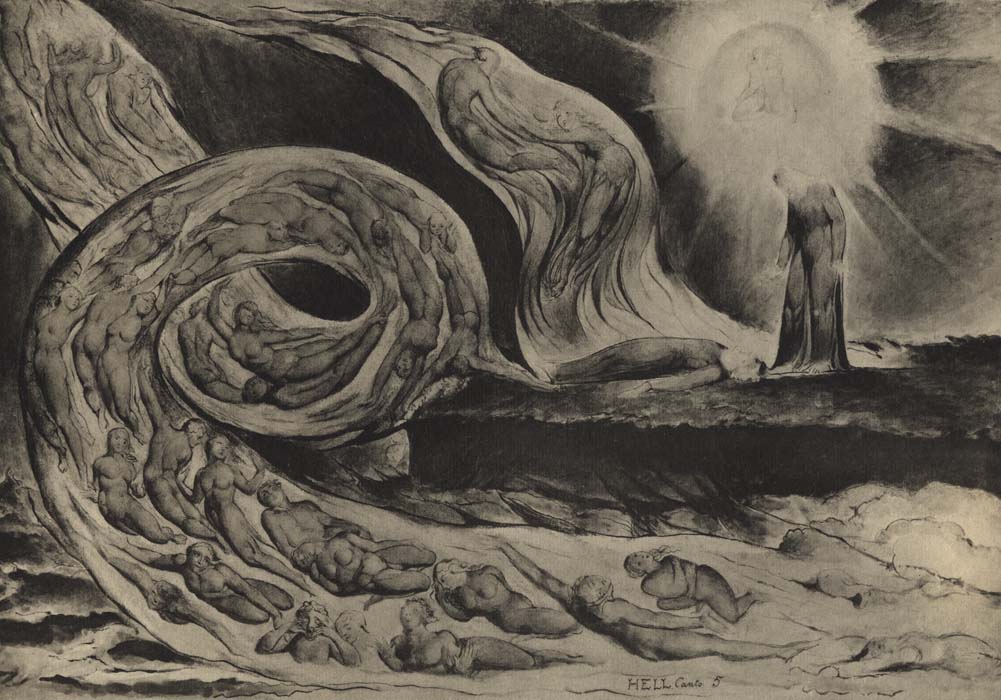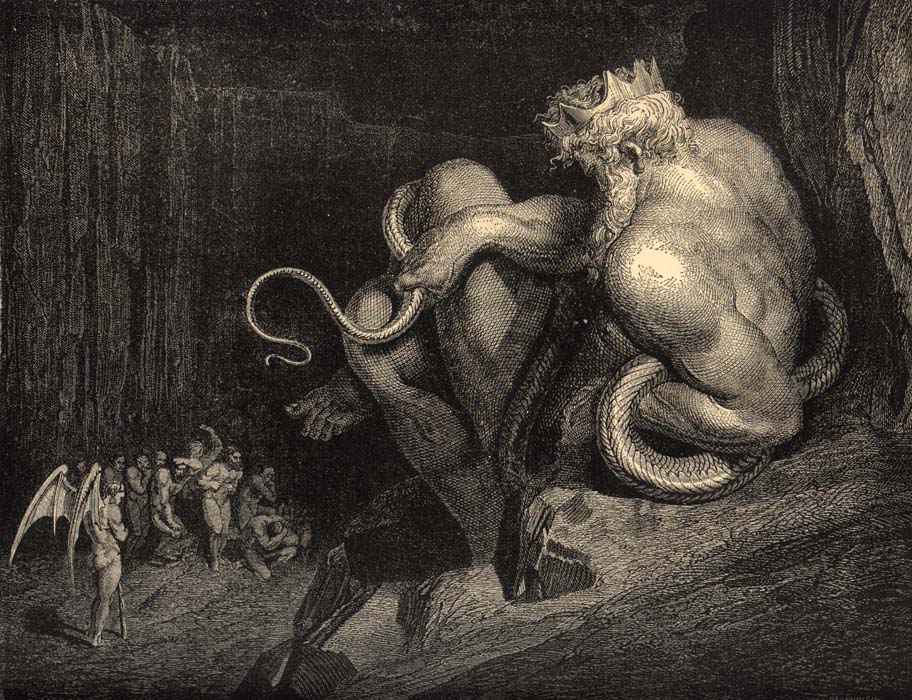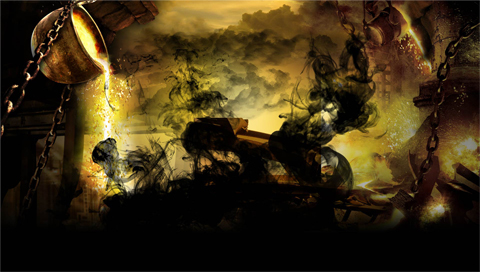 What If Korea Gave The Handmaid's Tale a KDrama Remake?
What If Korea Gave The Handmaid's Tale a KDrama Remake?


A brief background:
Durante degli Alighieri, commonly known by his short name Dante Alighieri or simply as Dante, was a major Italian poet of the Late Middle Ages. Dante was the author of La Commedia (The Devine Comedy), consisting of Paradiso (Heaven), Purgatorio (Purgatory) and Inferno (Hell). It is entirely written in Italian and is one of the earliest depictions of the afterlife. The books are considered poetry, being classified as an Epic Poem, the length of one around 200 pages per edition. Many translators have different interpretations as to how we are supposed to make sense of these books. These books have created some elements of horror as we know today.
The levels explained:
A large parallel in both the movie and the large epic poem is that there are varying levels to Hell, and it is not one giant pit of despair, but rather many different pits of despair. There are varying levels of torture depending on the amount of sin acted upon in the living world.
 ➞ Messenger Gods
➞ Messenger Gods
In the AWTG movie, three Messenger Gods of Hell help lead the main character down to the pits of Hell.
Gang Rim Duk Choon Hae Won Maek (played by Ha Jung Woo) (played by Kim Hyang Gi) (played by Joo Ji Hoon)
These Messenger Gods bring the lead character, Kim Ja Hong after he gets killed in a fire, down to the gates of Hell to have different Gods justify his sins.
In Dante’s Inferno, however, Dante meets Virgil in the first Canto.

From there, he leads Dante the same way the Messenger God's lead Ja Hong through Hell.
➞ A Call To Action
There are beasts blocking Dante’s path.
A Leopard, a Lion and a She-Wolf. Virgil tells him that he must pass through Hell and Purgatory before he gets to Heaven, and their journey begins there. Kind of different compared to the Korean version.

"A Paragon!" exclaims Duk Choon , "The last honorable death was 422 years ago!". They tell him he has passed away, as scheduled on August 28, 2017, and that they (the messenger gods) will defend him through 7 trials over 49 days to become reincarnated. The deputy, the assistant and the defender.
Afterlife Law 3.1: One cannot wander the living world, and there's no time for farewells.


1: The Gates
While there are 7 Circles or "trials" in this depiction of Hell, Dante's has 9 Circles. Both though, have gates to enter.
"Lasciate ogne speranza, voi ch'intrate", translated as "Abandon all hope, ye who enter here."
2. The Volcano of The Damned:

"The Hell Of Murder" as Won Maek calls it, is their first stop.
The firs t circle of Hell in Inferno is Limbo, where Pagans and Unbaptized Souls are put to wander in caves, desperate to meet God.
t circle of Hell in Inferno is Limbo, where Pagans and Unbaptized Souls are put to wander in caves, desperate to meet God.

Depicted here in a video game, which illustrates the different levels, brings them to life.
God of Murder
3. Hell of Indolence

The River of Indolence
Article 2.3: Indolence is wasting away a noble life given to the subject with endless idling and negligence.

Goddess of Indolence
 The second circle of Hell in Inferno is Lust. The souls here are endlessly blown and spiraling in the winds of a violent storm.
The second circle of Hell in Inferno is Lust. The souls here are endlessly blown and spiraling in the winds of a violent storm.
4. The Hell of Deceit
The Blade Forest
"The reflec tion of the moon on the blades is quite beautiful, right?" Duk Choon tries to joke, becoming silenced by Gang Rim.
tion of the moon on the blades is quite beautiful, right?" Duk Choon tries to joke, becoming silenced by Gang Rim.
They go through a transportation system to get to the next trial. Dante has a fit of missing his family as he is transported to one circle to another.
King Yeomra is equivalent to Minos (Minotaur) in this level.

Minos assigns different types of torture to the lines of sinners, while King Yeomra is the God of the Underworld. They play similar parts, but in AWTG, there is no Satan at the end of it all like in the Inferno. The closest that we get at this part in the novel is when Dante encounters Mino.

The Goddess of Deceit
The third circle of Hell in Inferno is Gluttony. The souls here walk in an endless, icy rain.

5. The Hell of Injustice

This trial has cold-hearted souls trapped in ice, unable to breathe. It embodies a couple of Circles of Hell together into one, which makes this movie as good as it is in terms of accuracy.

God Of Injustice
The fourth circle of Hell in Inferno is Greed. The souls here are consumed in a melting pot of Gold as they climb their way out to escape, only to be swept back into it.

6. The Heavenly Passage- leading to the Hell Of Betrayal.

7. The Hell Of Betrayal

Goddess Of Betrayal
Ja Hong gets a pass through this trial. This level is like the last one, lots of ice.
The fifth circle of Inferno's Hell is Anger, where souls have an endless battle in a murky swamp. This is much like the Hell Of Violence, coming up next.

8. The Hell of Violence
This is the rockiest of the trials, in which rocks fight each other and explode to create more.

God Of Violence
The sixth circle of Inferno's Hell is Heresy, where souls are entrapped in a flaming pit, guarded by demons who attempt to escape.

The last trial we see in this first of two movies (as of right now), is where he finds forgiveness in his mother in a sand-like trial, which incorporates a lot of the Inferno circles.
We also see King Yeomra again, as well.
For reference, here is the classification that I was going off of, and all I had in my memory of the book that I read not too long ago. This isn't completely accurate, but it shows the inspiration behind the movie, and where they got their ideas from. Each of the Trials embodied multiple Circles of Hell since there are 9 in total and not 7. To not copy-cat Dante's Inferno, they used multiple variations in Korean Mythology to differentiate the two completely. Keep in mind that this is all fiction, and a lot of this is made up and in the Fantasy Realm.
from. Each of the Trials embodied multiple Circles of Hell since there are 9 in total and not 7. To not copy-cat Dante's Inferno, they used multiple variations in Korean Mythology to differentiate the two completely. Keep in mind that this is all fiction, and a lot of this is made up and in the Fantasy Realm.










